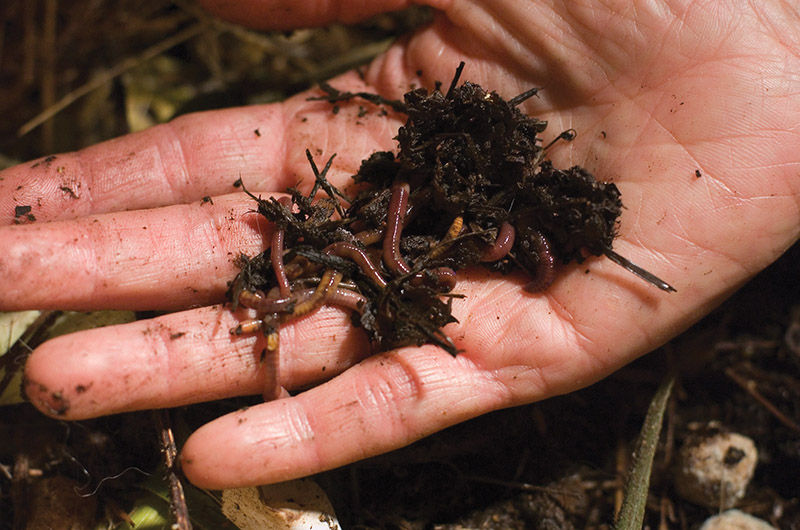Composting-optimized red worms: A guide to their life cycle
Every Little Thing You Need to Know About Red Wigglers for Composting
Red wigglers, or Eisenia fetida, play a crucial duty in the realm of composting, transforming organic waste into valuable soil amendments. Their distinct organic traits allow them to flourish in numerous conditions, making them an excellent choice for both novice and seasoned composters alike. Recognizing their demands and benefits is critical for establishing a productive vermicomposting system. The process of establishing up a worm bin and preserving it can pose difficulties. To efficiently harness the capacity of these worms, one must discover the details of their care and monitoring.
What Are Red Wigglers?

(redworms for composting)
Belonging To The United States and copyright, red wigglers are surface-dwelling organisms that favor damp, cozy environments rich in decaying raw material. Their diet regimen consists primarily of decaying plant product, food scraps, and various other organic debris, which they eat and break down efficiently. As they digest this material, they generate nutrient-rich spreadings that improve soil fertility.
Red wigglers are hermaphroditic, possessing both male and female reproductive body organs, and can replicate promptly under optimal problems. Overall, red wigglers are essential factors to the process of reusing organic waste right into important compost.
Advantages of Using Red Wigglers
Making use of red wigglers in composting systems offers many advantages that enhance both the efficiency of waste administration and the top quality of the resulting garden compost. These worms, clinically known as Eisenia fetida, are specifically efficient at breaking down natural matter, turning kitchen area scraps and backyard waste right into nutrient-rich garden compost at an accelerated rate.
Among the key advantages of utilizing red wigglers is their capacity to eat big quantities of organic material, frequently processing their weight in food waste daily. This high usage price brings about much faster disintegration and minimizes the quantity of waste sent out to garbage dumps. The castings generated by red wigglers are abundant in vital nutrients, helpful microorganisms, and enzymes, making them an excellent plant food for yards and plants.
Additionally, red wigglers grow in a selection of environments, making them versatile for both interior and outdoor composting systems - red wigglers. Their existence in a garden compost container assists to aerate the product, protecting against odors and promoting a healthy and balanced composting procedure. Generally, employing red wigglers not only contributes to effective waste management yet likewise sustains sustainable horticulture techniques via the production of high-grade garden compost
(eisenia fetida worms for sale)
Establishing Your Worm Bin
To efficiently establish a worm bin, it is necessary to choose an ideal container that satisfies the demands of browse around here red wigglers while providing a conducive atmosphere for composting. An appropriate container can be made from plastic, timber, or steel, with a capability of at least 1 square foot for every pound of worms.
Make sure the container has ample water drainage openings to prevent excess moisture, as red wigglers prosper in a wet, yet not water logged, setting. red wigglers. The container needs to additionally be aerated to supply adequate air flow, stopping anaerobic problems that can damage the worms
A perfect area for the worm container is a cool, dark location, without straight sunshine and severe temperature levels, as red wigglers like a temperature series of 55 to 77 levels Fahrenheit.
Prior to introducing the worms, prepare bed linens products such as shredded paper, cardboard, or coconut coir, which will offer both habitat and food. Moisten the bed linens gently to produce a welcoming environment for the worms. Think about putting a lid on the container to preserve humidity and lower pests, while guaranteeing it can be quickly removed for upkeep.
Feeding and Treatment Standards
Feeding red wigglers is a critical element of keeping a healthy composting system. These worms prosper on a diverse diet regimen, mostly composed of natural materials such as vegetables and fruit scraps, coffee premises, and smashed eggshells. It is necessary to avoid feeding them meat, milk, and oily foods, as these can create undesirable odors and bring in insects.
When introducing food to your worm bin, cut or shred materials right into smaller pieces to facilitate quicker decay. Start with percentages to assess the worms' consumption price, gradually boosting the quantity as they adapt. It is advisable to alternate feeding places within the bin to urge extensive blending and aeration of the garden compost.

Troubleshooting Common Issues
Keeping a growing worm composting system can in some cases present challenges that require focus and troubleshooting. Usual problems consist of an unpleasant odor, which usually indicates overfeeding or the presence of anaerobic problems. To treat this, minimize the quantity of food added and make certain correct oygenation by mixing the bed linens product.
One more frequent trouble is the getaway of worms from the container. This can happen due to too much moisture or inappropriate environmental problems. On a regular basis check the moisture degrees, going for a wet however not soaked uniformity, and keep ideal temperatures in between 60-80 ° F(15-27 ° C )to develop a comfortable habitat for your red wigglers.
Bugs, such as fruit flies, can likewise get into worm bins. red wigglers. To fight this, cover food scraps with a layer of bedding or shredded paper to hinder flies from laying eggs. Furthermore, ensure that any type of food added is fresh and complimentary from mold, which can bring in unwanted pests
Finally, if your worms appear inactive, examine for stress and anxiety aspects such as temperature changes or inadequate moisture. Addressing these typical concerns will aid maintain a healthy and effective worm composting system.
Conclusion
In recap, red wigglers, or Eisenia fetida, play an important duty in lasting waste monitoring through vermicomposting. Proper setup and maintenance of a worm bin, along with adherence to feeding guidelines, guarantee a successful environment that lessens land fill payments.